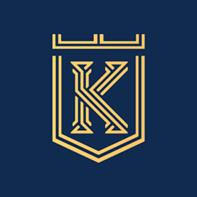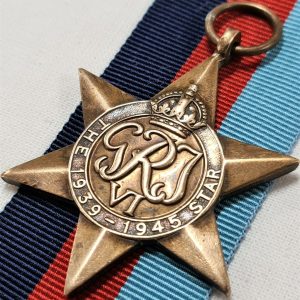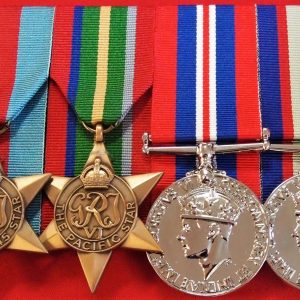WW2 AUSTRALIAN NAVY NAMED ADMIRAL FARQUHAR SMITH UNIFORM TRUNK RANK BOARDS HAT HMAS SYDNEY RELATED
Naval officer’s fine bicorne hat with twisted bullion loop and bullion tassels to left side & fore and aft peaks, fine seal skin fur outer cover, white silken lined, maker marked for Gieves of London & ink named. C. R. S. FARQUHAR. Pair of gilt bullion Rear Admiral dress shoulder boards, Gives marked retaining metal suspender clips to each. Single gilt metal sword belt buckle, named to rear C.R.S.F. All contained in early 1900’s Gieves badged velvet-lined tin with lid inscribed in white paint C.R.S. Farquhar R.N. Generally very good condition overall. The uniform and sword* represent the former property...
$3,350.00
1 in stock
Naval officer’s fine bicorne hat with twisted bullion loop and bullion tassels to left side & fore and aft peaks, fine seal skin fur outer cover, white silken lined, maker marked for Gieves of London & ink named. C. R. S. FARQUHAR. Pair of gilt bullion Rear Admiral dress shoulder boards, Gives marked retaining metal suspender clips to each. Single gilt metal sword belt buckle, named to rear C.R.S.F. All contained in early 1900’s Gieves badged velvet-lined tin with lid inscribed in white paint C.R.S. Farquhar R.N. Generally very good condition overall. The uniform and sword* represent the former property of one of Australia’s senior wartime naval officers, who many have attributed the post engagement loss of life in regards to the disappearance of H.M.A.S. Sydney II. Ex Gregsons.
We also have Farquhar-Smith’s naval officer’s sword for sale in another listing.
Rear Admiral Charles Farquhar-Smith was born on Dumaresq Island, NSW on 29 January 1888. He was one of 11 children born to Albert George Smith and Mary Anne Smith (nee Wallace). His name at birth was Charles Farquhar Smith but he changed his surname, by deed poll, to Farquhar-Smith in 1916. Charles was a gifted student and was awarded a bursary thus enabling him to complete his education at Fort Street Public School, in Sydney, and later at Sydney Boys School. He became an ordinary seaman in the Merchant Navy. He joined his first ship in 1905; the barque Crompton, by 1913 he had gained his masters certificate (in steam vessels) and was serving as a junior officer in the White Star Line vessel SS Arabic. In December 1913 as a R.N.R. Lieutenant he commenced one year of full time training with the Royal Navy that included gunnery training at HMS Vivid and torpedo instruction in the cruiser HMS Defence. In May 1914 he was promoted to acting Lieutenant and joined the battleship HMS Dominion. As he was an Australian, the Royal Navy considered transferring Charles to the RAN at the end of his training but the outbreak of war on 4 August 1914 prevented this. 3 August 1914 Charles appointed to the cruiser HMS Aboukir and was soon taking part in operations in the North Sea. Aboukir took part in the Battle of Heligoland Bight on 28 August, during which three German light cruisers were sunk. Aboukir was torpedoed shortly after 06:00 on 22 September 1914. When Hogue and Cressy came alongside to rescue survivors they too were torpedoed and all three cruisers sank. Lieutenant Smith, clad only in his pyjamas, abandoned ship as Aboukir capsized spending several hours in the water clinging to a raft before being rescued by the Dutch vessel Flora. Several of the ships survivors were taken to the Dutch port of Ijmuiden and were repatriated to Britain, however 527 of Aboukir’s ship's company perished in the sinking. Charles was later commended for his leadership and continuous endeavour in encouraging the survivors while in the water. Served HMS Vernon (Portsmouth) in late October 1914 for a minesweeping course, and in December was given command of the 300 ton armed trawler Urana. Additionally he became the leader of the armed trawler patrol division, part of the Royal Navy Patrol Service, operating from the River Humber. From here the trawlers conducted anti-submarine patrols and minesweeping duties off the east coast of England. The trawlers also operated in the vicinity of the Dogger Bank; where he was noted as a zealous officer who took frequent and aggressive action against German forces. Charles also found time to marry Cicely Butcher at Bournemouth on 3 June 1915; they later had three children and their two sons also followed maritime careers in the RAN and Merchant Navy. Confirmed Lieutenant in October 1915, but a planned transfer to the battlecruiser HMAS Australia did not eventuate and he remained with the armed trawler division. In April 1916 Lieutenant Smith briefly took command of the elderly Torpedo Boat 025, transferring a few weeks later to Torpedo Boat 042 in command. These vessels operated in the English Channel and North Sea; with family history stating he was in action with German U-Boats on a number of occasions and was responsible for an unconfirmed sinking. In mid-1916 Charles changed his surname from Smith to Farquhar-Smith and, in early October, he was appointed in command of the destroyer HMS Racehorse; but a week later his transfer to the RAN was finally approved. He joined the light cruiser HMAS Sydney then operating in the North Sea. He served in her for the remainder of the war and was onboard when she was attacked by the German Zeppelin L43, in the North Sea, on 4 May 1917. Whilst the ship was not hit by any bombs this was the first air attack on an RAN ship. Following the Armistice, Sydney was part of the escorting force for the German High Sea Fleet that surrendered on 21 November 1918 and was interned at Scapa Flow, Scotland. Two of Charles’ younger brothers served in the 1st AIF during the war and 21 year old Private Donald Arthur Smith, of the 3rd Battalion, was killed in action in France on 9 August 1918.In late 1939 Farquhar-Smith was appointed as the District Naval Officer Western Australia and held this post until April 1942. This was, however, a significant responsibility as the port of Fremantle soon became a major hub for Australian warships escorting troop convoys to the Middle East and Singapore. The major activity during his time in Western Australia, however, was the HMAS Sydney/HSK Kormoran action fought on the evening of 19 November 1941. Both ships were sunk - Sydney with the loss of her entire ship's company. The aftermath of the action and the search for Sydney survivors, coupled with the rescue and interrogation of Kormoran survivors, again called into question Farquhar-Smith’s ability to undertake his duties as the District Naval Officer. There was already a long standing feud between Farquhar-Smith and Captain Frank Getting (Deputy Chief of Naval Staff) who claimed Farquhar-Smith was ‘not doing very well’ in the role. Getting effectively had Farquhar-Smith side-lined for the interrogations of senior German survivors; which was mainly undertaken by Rear Admiral John Crace, RN (Commanding the Australian Fleet). Additionally, many decades after the war, some commentators claimed Farquhar-Smith failed to react quickly enough to Sydney being overdue and that if he had ordered a search for the ship earlier then survivors might have been found. This allegedly caused his removal from his position as District Naval Officer Western Australia.
| Weight | 5 kg |
|---|---|
| Dimensions | 80 × 40 × 40 cm |














